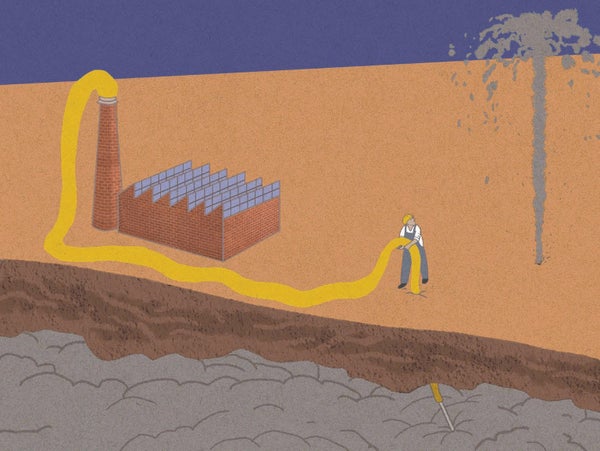The False Promise of Carbon Capture as a Climate Solution
Fossil-fuel companies use captured carbon dioxide to extract more fossil fuels, leading to a net increase in atmospheric CO2
Last December the leaders of the United Nations Climate Change Conference (COP28) in Dubai declared victory as the parties agreed to “transition away” from fossil fuels. But there’s a big issue that will remain contentious as countries try to define what counts as a transition: so-called unabated fossil-fuel use. Among its provisions, the agreement called for “accelerating efforts towards the phase-down of unabated coal power.”
Abatement in this context means carbon capture and storage (CCS). It’s the idea that we can still use fossil fuels as long as the carbon dioxide emitted is captured and stored in the ground. In the U.S., the oil and gas industries have been pushing this approach as one of the key solutions to the climate crisis. But how realistic is it?
Let’s start with a few facts. Oil is sticky stuff, and when you try to pump it out of a reservoir, most of it gets left behind, stuck to the rocks. But if you flood a field with water, detergents or gas (such as CO2), you can flush out much of the remaining oil. This technique is known as enhanced oil recovery, and it’s been standard industry practice for a long time. According to the U.S. Department of Energy, gas injection accounts for more than half of the enhanced oil recovery in the U.S. and has helped to add decades of life to fields that would otherwise by now have run dry. The same approach is used in gas fields to maintain the pressure that keeps the gas flowing.
On supporting science journalism
If you’re enjoying this article, consider supporting our award-winning journalism by subscribing. By purchasing a subscription you are helping to ensure the future of impactful stories about the discoveries and ideas shaping our world today.
In recent years the oil industry has tried to pour this old wine…
Read the full article here







